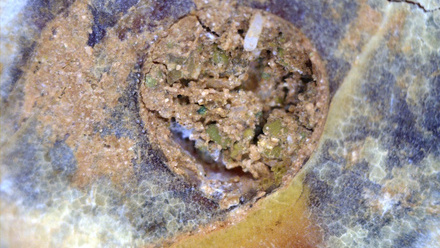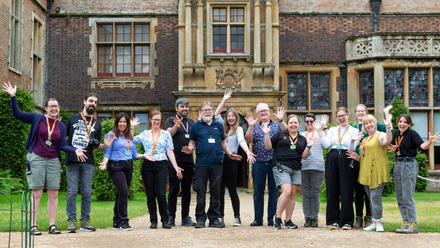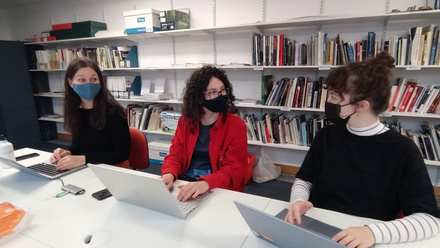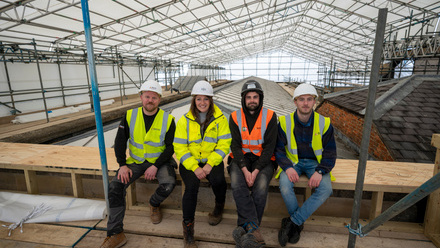The issue of environmental conditions in museums, galleries and archive has become a hot topic of conversation over the last few months. The twin pressures of working towards Net Zero in order to tackle the escalating climate crisis and the current concerns about the rising costs of energy have led many of us to ask ourselves how we might better navigate the tension of looking after our cultural heritage while also looking after the future of our planet.
There is a third internal pressure of course – STANDARDS. Museum professionals will be well acquainted with the various good practice guidelines and specifications that exist. We have BS EN 16893:2018 Conservation of Cultural Heritage in the UK. Many other countries offer excellent free resources via their websites – the Canadian Conservation Institute is a great example. And there are many other international standards, including the Our Collections Matter Toolkit produced by ICCROM. But perhaps the most familiar “standards” are the relative humidity (RH) and temperature figures, and the associated monitoring regimes, found in the Government Indemnity Scheme (GIS).
Standards can be very useful. They offer a way to synthesis data and experience gathered through research and practice in order to help others make good decisions. But… there is a problem when standards are applied out of context and without consideration, or without reference to the broader narrative or other priorities (such as the climate crisis). The GIS forms are a good example. If you dig into the history of the GIS you will eventually find that the RH and temperature figures are taken from NMDC’s guiding principles on reducing museums' carbon footprint, which itself refers to the earlier Bizot Green Protocol, an international agreement dating to 2014.
Why does this matter? It matters because the supporting commentary in the NMDC guiding principles talks about the need to consider the context holistically and to make use of the professional expertise and judgement of the conservators who are charged with the care of the objects: “A conservator’s evaluation is essential in establishing the appropriate environmental conditions (for works of art requested for loan).” Input from conservators and conservation scientists is necessary because agreeing an appropriate set of environmental conditions to aim for is not straightforward. It requires knowledge, experience and judgment.
Points to consider
-
Not all objects are equal! Most collections comprise a wide variety of objects which will be individually vulnerable to varying degrees. A one-size-fits-all solution based on the needs of the most fragile objects is inefficient and potentially wasteful of energy. Note that the NMDC guidelines, which informed the GIS specification, were written for hygroscopic material (e.g. paintings on canvas, textiles, and ethnographic objects). More sensitive materials (e.g. paintings on silk, panel paintings, vellum, and parchment) will require tighter RH control. Less sensitive materials (e.g. stone, ceramics) will cope with wider parameters for both RH and temperature. The Museums Galleries Scotland website outlines some of the variances in this guidance: Temperature and humidity in museums.
-
Stability is important. In some cases maintaining stable relative humidity will matter more than keeping the objects in ideal environmental conditions. It is better to create conditions that are less tightly controlled but are controlled reliably over time than very tightly controlled conditions only some of the time.
-
Buffering. If a painting is kept behind glass in a frame, or an object placed in a case, or a manuscript stored in an archive box then the conditions inside the container are different from the conditions in the room. So what are we measuring? And are we taking proper account of the buffering effect? Icon member Julie Bon has been researching the difference in the conditions experienced by books stored in boxes at the National Library of Scotland, and the RH and temperature within the room. Early findings suggest that the boxes play a key role in moderating the environment.
It is also interesting to note that most of the available guidance on environmental conditions includes a recommendation that further research needs to be carried out in order to improve the guidance.
What next?
So, if adhering to (questionable?) standards isn’t necessarily the most appropriate approach given the climate and financial challenges that we face, then what is the alternative?
A growing number of people, including conservators and conservation scientists, would advocate for a return to first principles: understanding and managing the specific risks of caring for a collection. And let’s be clear: fluctuations in environmental parameters are a lesser risk than fire or flood in the grand scheme of things; a point that is neatly made in the ICCROM publication: “A Guide to Risk Management of Cultural Heritage”. Or if you prefer a specific example: those of you caring for a collection of woollen carpets probably ought to be more worried about moths, UV degradation and physical damage than RH and temperature.
Taking a risk-based approach requires us to have greater regard for the knowledge and expertise of preventive conservators and their conservation science colleagues. Their deep understanding of collections care and the need to address all ten agents of decay (not just RH and temperature!) is key to the decision-making process when we are tackling museum re-design. And conservators need to be ready to bring their understanding to the table in order to collaborate effectively with all the other relevant stakeholders to jointly take the necessary strategic decisions.
We also need to get better at sharing our data and research. Many Icon members are currently experimenting with their galleries and storage spaces, trying to build a better understanding of what really matters. The overall aim is to reach a refreshed shared understanding about what is good (not best!) practice and how to apply it in the varied and challenging contexts of our museums, galleries and archives.
But, lastly, we will also need policy-makers to place their trust in conservation professionals too. Let’s hope that’s not too big an ask.
Museums need to find ways to reconcile the desirability of long-term preservation of collections with the need to reduce energy use… Conditions should be determined by the requirements of individual objects or groups of objects and the climate in the part of the world in which the museum is located.






